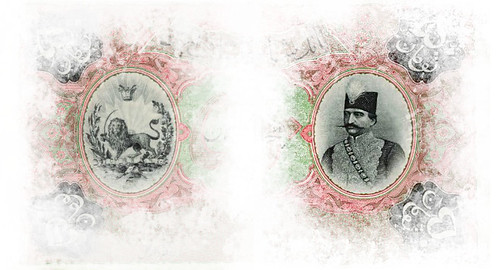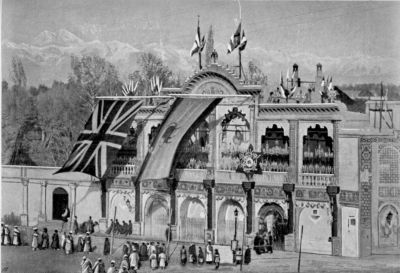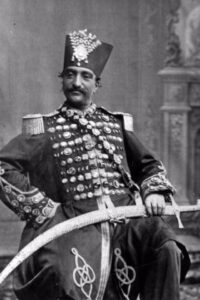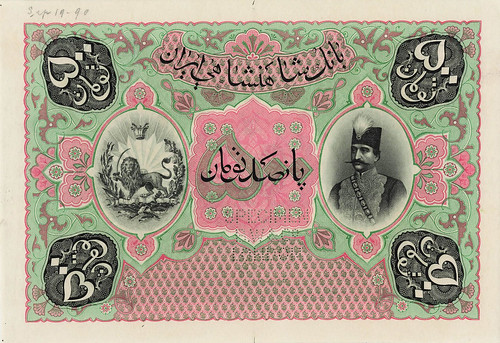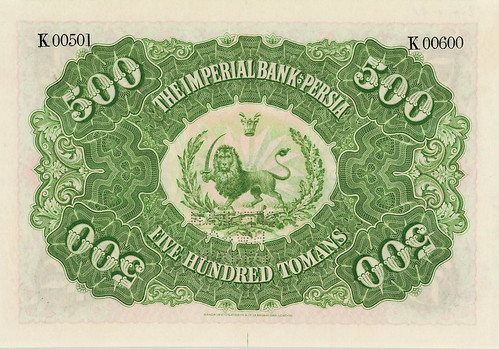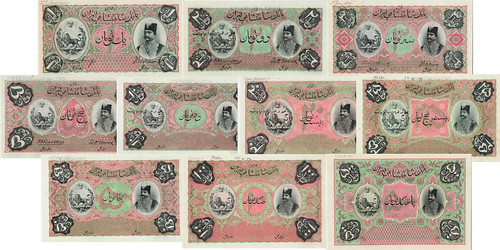
PREV ARTICLE
NEXT ARTICLE
FULL ISSUE
PREV FULL ISSUE
WBNA OFFERS RARE IMPERIAL BANK OF PERSIA NOTESThis article from World Banknote Auctions highlights the rare Imperial Bank of Persia notes in their upcoming sale -Editor Banknote collectors and enthusiasts have a unique opportunity to acquire rare specimens from the Imperial Bank of Persia in the upcoming World Currency Sale 43 of World Banknote Auctions. These classic rarities, known for their impressive size, original design, and historical significance, are highly sought after by collectors worldwide. The auction presents a chance to own a piece of Iran's financial history and add a valuable item to one's banknote collection.
Imperial Bank of Persia and Its Importance
The First Series of the Imperial Bank of Persia
Unveiling the Rarity of Higher Denomination Issued Notes
In this sale, the three highest denominations available are the 50 Tomans, 100 Tomans, and the exceptionally rare 500 Tomans. The extremely rare 1000 Tomans is the only denomination missing from the auction. Among the notes offered, the 50 Tomans were printed with three prefixes and had a total circulation issue of 39,500 notes. However, according to the final accounting of the first series in 1931, only 114 of these notes remained outstanding. Additionally, there were 122 notes listed as
Desirability for Collectors
The banknotes from the Imperial Bank of Persia, particularly the Qajar series, are highly coveted among world banknote collectors. Their impressive size, classic design, and rarity make them favorites among enthusiasts. However, higher denominations like the 500 Tomans are exceptionally rare and infrequently appear in the market, making this auction a unique opportunity for advanced collectors to acquire these iconic pieces of history. The World Banknote Auctions sales featuring rare specimens from the Imperial Bank of Persia brings forth an exciting opportunity for collectors to acquire banknotes of immense historical and cultural value. With limited availability, these banknotes offer a glimpse into Iran's financial past and the economic aspirations of the nation during the reign of Naser al-Din Shah. The following lots are available in World Currency Sale 43: Lot 44369: Persia ND (1890-1923) P-1as PMG Choice UNC 63 1 Toman (Specimen) Lot 44370: Persia ND (1890-1923) P-2s PMG About UNC 50 2 Tomans (Specimen) Lot 44371: Persia ND (1890-1923) P-2As PMG Choice Extremely Fine 45 3 Tomans (Specimen) Lot 44372: Persia ND (1890-1923) P-3s PMG Choice UNC 64 5 Tomans (Specimen) Lot 44373: Persia ND (1890-1923) P-4s PMG Choice UNC 64 10 Tomans (Specimen) Lot 44374: Persia ND (1890-1923) P-5s PMG Choice UNC 64 20 Tomans (Specimen) Lot 44375: Persia ND (1890-1923) P-6s PMG About UNC 53 25 Tomans (Specimen) Lot 44376: Persia ND (1890-1923) P-7s PMG Choice Extremely Fine 45 50 Tomans (Specimen) Lot 44377: Persia ND (1890-1923) P-8s PMG Extremely Fine 40 100 Tomans (Specimen) Lot 44378: Persia ND (1890-1923) P-9s PCGS Gem UNC 66 PPQ 500 Tomans (Specimen)
To read the complete article, see:
Wayne Homren, Editor The Numismatic Bibliomania Society is a non-profit organization promoting numismatic literature. See our web site at coinbooks.org. To submit items for publication in The E-Sylum, write to the Editor at this address: whomren@gmail.com To subscribe go to: https://my.binhost.com/lists/listinfo/esylum All Rights Reserved. NBS Home Page Contact the NBS webmaster 
|
